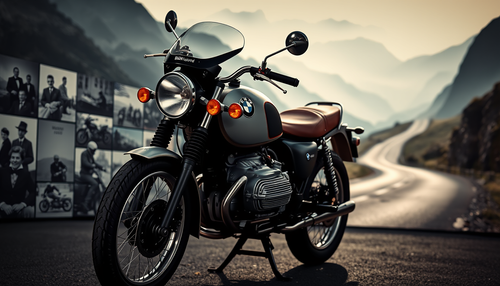
939 mots | Temps de lecture : 4 minute(s)
Kawasaki's history in MotoGP: An epic between ambition and challenges
Kawasaki is one of the most respected manufacturers in the world of motorcycling, particularly in Superbike and motocross . However, its history in MotoGP , the premier class of motorcycle Grand Prix, has been marked by ups and downs . Between success in 500cc and withdrawal from modern MotoGP, Kawasaki has left a lasting mark despite an intermittent presence. A look back at the fascinating history of the Japanese brand in the world championship.
Kawasaki's Grand Prix debut (1970-1982)
Kawasaki entered the 500cc Grand Prix in the 1970s, seeking to compete with Honda , Yamaha and Suzuki . At that time, the 500cc class was the ultimate benchmark in the world championship.
Kawasaki's first victories and rise
Kawasaki 's first notable Grand Prix victory came in 1971 with British rider Dave Simmonds , the brand's iconic rider. Kawasaki used a 500cc twin-cylinder motorcycle which, while powerful, struggled to compete with the 4-cylinder engines of its rivals.
The real turning point came with the arrival of Kork Ballington and Anton Mang in the late 1970s. These riders won several titles in the 250cc and 350cc classes, establishing Kawasaki as a dominant force in the mid-size class.
The withdrawal of the 1980s
Despite its success in small-displacement bikes, Kawasaki decided to withdraw from the 500cc category in the early 1980s. The brand preferred to concentrate on endurance and superbike racing , where it enjoyed increasing success. This absence in the premier class was nevertheless felt and prevented Kawasaki from continuing to compete with the MotoGP giants .
Kawasaki's return to MotoGP (2002-2009)
With the introduction of 4-stroke motorcycles and the transformation of the 500cc class into MotoGP in 2002, Kawasaki decided to return to competition. The brand then developed the Kawasaki Ninja ZX-RR and entered an official team in 2003.
The complicated beginnings (2003-2004)
Kawasaki re-entered MotoGP under the name Kawasaki Racing Team . However, the first few seasons were marked by difficulties. The ZX-RR suffered from a lack of power and reliability compared to the dominant machines from Honda , Yamaha and Ducati .
The first drivers, Garry McCoy and Alex Hofmann , struggled to achieve significant results. However, in 2004, the arrival of Shinya Nakano changed the situation. The Japanese driver managed to secure a podium finish at the Motegi Grand Prix, marking a turning point in the team's development.
Kawasaki's progress with Nakano and Puniet (2005-2007)
With Shinya Nakano and Randy de Puniet , Kawasaki began to make progress. In 2006, Nakano gave Kawasaki its best result in MotoGP by finishing second at the Dutch Grand Prix at Assen.
Despite this improvement , the green brand struggles to turn its performances into victories . The ZX-RR remains competitive on certain circuits, but lacks consistency over the course of a season.
2008: A promising but unstable season
In 2008, Kawasaki hired John Hopkins and Anthony West . Although the ZX-RR showed progress in qualifying, the race results remained insufficient to compete with the best machines on the grid.
This year also marks one of Kawasaki's last attempts to establish itself in MotoGP , as economic difficulties begin to affect the brand's commitment.
Why did Kawasaki withdraw from MotoGP in 2009?
- Global Economic Crisis : In 2009, Kawasaki officially announced its withdrawal due to the financial crisis.
- Lack of results : Despite progress, the team struggles to reach the podiums regularly.
- Reorientation towards Superbike : Kawasaki chooses to concentrate its resources on WSBK , where it becomes the reference with the ZX-10R .
A possible return to MotoGP?
As of today, a Kawasaki return to MotoGP seems unlikely . The brand continues to dominate Superbike and has not announced any plans to return to the premier class.
However, several elements could change the situation:
- More accessible MotoGP regulations, including a cost cap that could encourage Kawasaki to return.
- The development of a prototype motorcycle in collaboration with a private team.
- A request from fans , who would like to see the green brand challenge Yamaha, Honda and Ducati again.
Conclusion
Kawasaki has had a fascinating history in MotoGP , between ambitions and difficulties. After a promising start in the 1970s and a return in 2002, its adventure in the premier class ended in 2009. Today, the brand shines in Superbike , but its absence in MotoGP continues to fuel speculation .
Fans hope that one day the green brand will return to the grid to take on Honda, Yamaha and Ducati in the world's biggest motorcycle competition.


